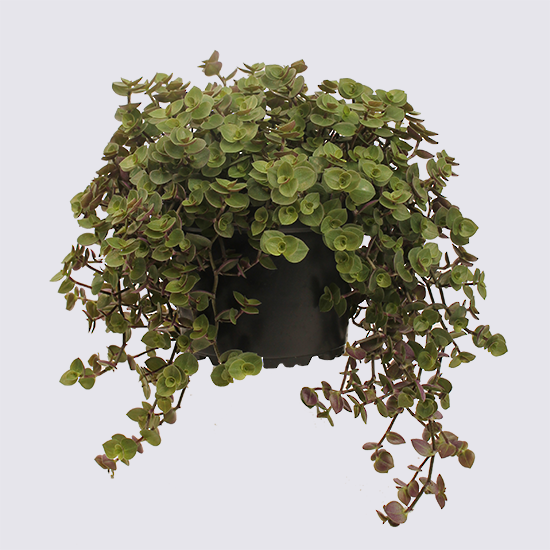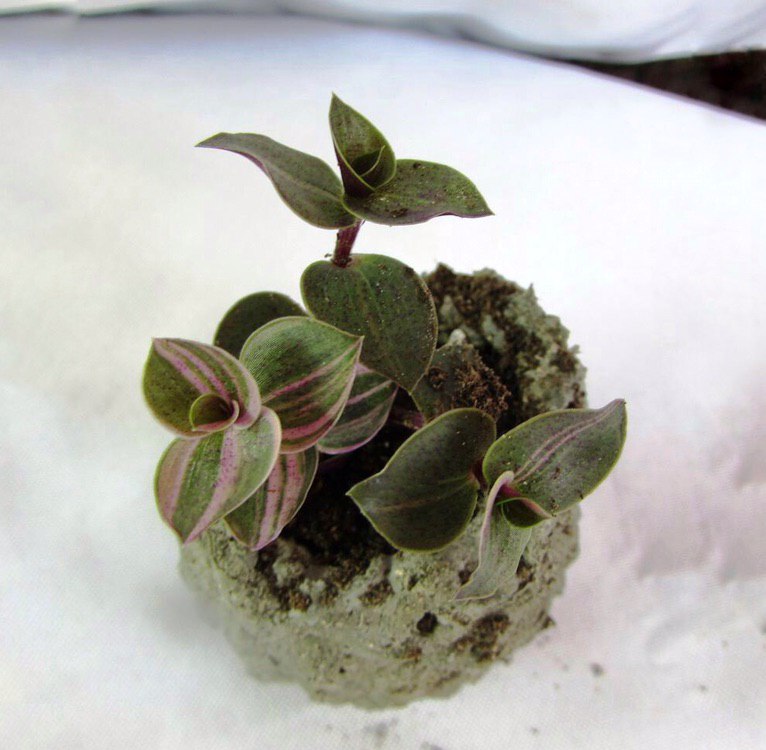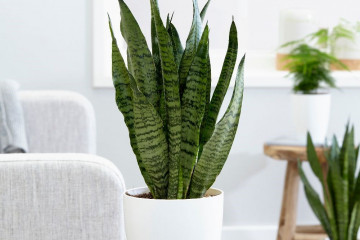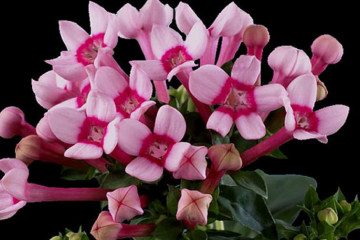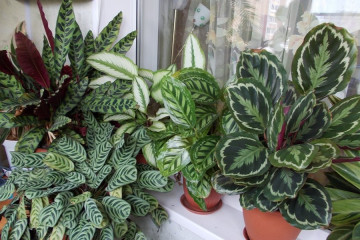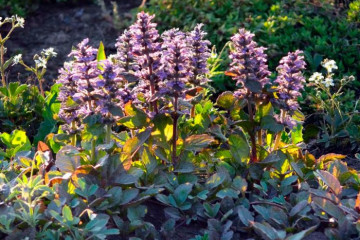Callisia creeping flower - description and care
Content:
Creeping callusia (small-leaved, repens) is an attractive indoor plant that is easy to grow in an apartment or office. This article provides a description of the creeping callis flower and information on caring for it.
Botanical characteristics
Callisia is a native of the genus of the evergreen perennial Kommelinov family. It is not surprising that the name translated from Greek means "beauty". The flower is characterized by creeping, as well as erect stems, which can form dense thickets. The flower is native to the tropical and subtropical regions of the United States.
Today callisia takes root well at home. Most often, callisia is grown graceful, repens, fragrant and laly-shaped. Fragrant has not only decorative properties, but also medicinal. However, do not forget that the plant can cause an allergic reaction in both humans and animals.
Callisia repens is characterized by a stem 15-20 cm long, on which spherical, heart-shaped leaves of green color are formed on top and with a burgundy tint below. They are no more than 3-4 cm in size.
At home, small-leaved callisia rarely blooms, but if the process occurs, then the flowers are white and unsightly, although they have a pleasant smell.
How to care for callis at home
The flower itself is not very picky, but there are still certain conditions that must be met for proper cultivation.
Seat selection
Choosing a place is a rather important stage when planting a plant. For callisia, it is necessary that the area is well lit, but it is better that direct sunlight does not fall. This can be a window sill, if the windows are not on the sunny side, the back of the room, a table, a shelf perpendicular to the window, etc. It is important that there is good air circulation in the room.
There is no need to select a special soil, for example, you can take a substrate for succulents or any other. However, it is important that the soil is light. Water regularly and increase the amount of water during the spring-summer period, when the air temperature is very high.
If the plant has grown very much, and there is no longer enough space in the pot, it must be transplanted. This can be done in two ways: transplant into a larger container or divide the plant into two parts.
Do not forget about cleaning yellowed or dry leaves, as well as damaged stems.
Air temperature
For callisia, the best temperature is 20-25 ° C, so in summer it has no problems. In winter, it may be difficult to maintain the temperature regime, but if it is not lower than 16 ° C, then everything will be fine. Of course, the flower will slow down its growth, but it will not disappear.
Air humidity
The need for water largely depends on the origin of the plant. Since callis is native to the subtropical and tropical regions of the United States, it needs high air humidity.In order for this plant to develop correctly, bloom and smell, it is necessary to spray it regularly (preferably every day) and not let the hot air blow on it, that is, it is not recommended to put the pots next to the radiator, heater, stove, etc.
Diseases and pests
The flower can be destroyed by the following pests and ailments.
Parasites
Just like outdoor plants and indoor plants, the flower can be infected with diseases or suffer from parasites. Household pests are: thrips, scale insects, mealybugs, whiteflies, etc.
A spider mite is a microscopic mite that cannot be seen with the naked eye. However, when attacking a plant, it leaves thin layers of cobwebs (most often on the inner side of the leaf). It seems that the leaves were sprinkled with flour. For prevention, it is necessary to spray the plant with water.
If the plant is already infected, then you need to rinse it in the shower and treat it with drugs. Best suited for use: vertimek, fitoverm, agravertine, acarin and neoron.
Thrips are sucking parasites that lay eggs in leaf tissue. Outwardly, they look like an elongated front sight, although it is quite problematic to make out it, but the traces - dry dots of a silvery color that can turn into a spot - give it away. For the fight they use aktara (best of all), agravertin, akarin, spark-bio, fitoverm.
Scabbards are sucking insects that feed on cell sap. It is not difficult to find them: small, light bumps, similar to droplets of solidified wax. They can be easily removed with your finger or crushed. When fighting the parasite, it is recommended to use the same drugs as against thrips.
Although callisia is quite resistant to unfavorable conditions, do not forget about its care, because parasites most often infect a weak plant and at low air humidity. If the plant is infected, it is necessary to process the entire collection of flowers, otherwise there may be an epidemic that will lead to the death of many specimens.
Diseases
Callisia is characterized by the problem of root and stem rot. This can occur due to the permanent moisture of the earthen coma and the lack of good drainage. To fight, you need to remove all damaged parts and process the cuts with chopped charcoal. You also need to change the potting soil. If there are a lot of lesions, then it is necessary to carry out treatment with fungicides, for example, profit, bayleton, acrobat, rovral and oxychom.
Possible growing difficulties
Problems can arise from improper care. These can be unusual diseases, for example:
- atypical discoloration of leaves and their fall. To do this, you need to reduce the amount of water when watering;
- drying of the leaves. To do this, you need, on the contrary, to increase the amount of water, but not to overdo it;
- an increase in the distance between the leaves and a lengthening of the stem indicates a poor growing place;
- if people smoke in the apartment / office, then callisia should be removed as far as possible, otherwise it will die. The plant does not tolerate tobacco smoke.
Thus, callisia does not require diligent home care. The main thing is to follow the rules of cultivation, carefully monitor the condition of the flower, and then it will delight the eye with its presentable appearance.
